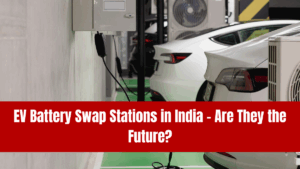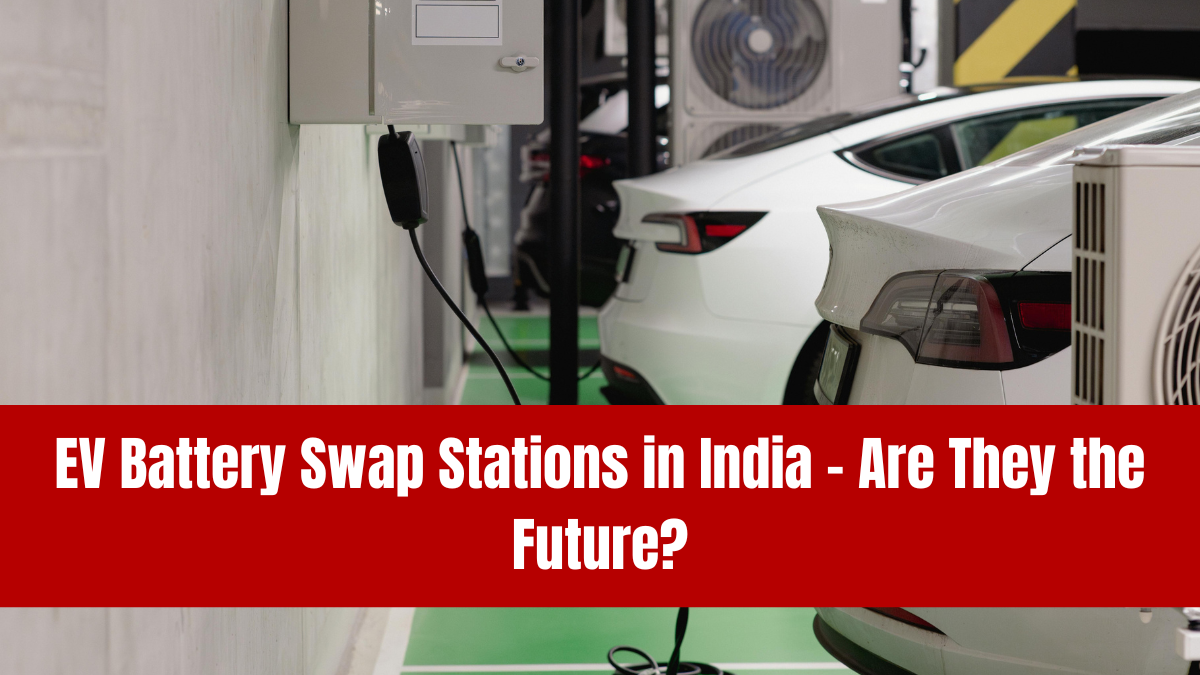India’s electric vehicle (EV) market has seen rapid growth in 2025, with sales crossing record highs in both two-wheeler and four-wheeler segments. However, the biggest challenge remains charging infrastructure. To address this, battery swap stations have emerged as a promising alternative, offering EV users the ability to replace drained batteries with fully charged ones in just a few minutes.
In September 2025, India has witnessed a significant expansion of battery-swapping networks, particularly in metro cities. But the question remains: Are battery swap stations the future of EV mobility in India?

How Do Battery Swap Stations Work?
Battery swapping eliminates the need to wait for a car or bike to recharge. Instead, users drive to a swap station, hand in their drained battery, and receive a fully charged one.
-
Time Taken: 3–5 minutes for two-wheelers, 10–15 minutes for cars.
-
Payment Model: Pay-per-swap or subscription-based.
-
Compatibility: Works only if vehicles are designed with standardized, swappable battery packs.
This system is especially popular for electric scooters, delivery vehicles, and fleet operators.
Growth of Battery Swap Infrastructure in 2025
As of September 2025, battery swapping is growing fast in India:
-
Delhi, Bengaluru, and Mumbai have the highest density of stations.
-
Ola Electric, Sun Mobility, and Bounce Infinity lead in the two-wheeler and three-wheeler space.
-
NTPC and Indian Oil are piloting battery swap stations for electric cars.
-
State Governments like Tamil Nadu and Maharashtra are incentivizing swap networks with subsidies.
The government’s Battery Swapping Policy 2025 has accelerated adoption by setting standards for interoperability and safety.
Benefits of Battery Swap Stations
1. Faster Turnaround
Unlike charging stations, where even fast chargers take 30–60 minutes, swapping allows vehicles to get back on the road in minutes.
2. Lower Vehicle Cost
Since the battery accounts for 30–40% of EV cost, manufacturers can sell vehicles without the battery, reducing upfront prices. Users can then subscribe to a battery service.
3. Ideal for Fleets
Delivery companies, cab aggregators, and logistics operators save time and money, making swapping a cost-effective solution.
4. Reduced Range Anxiety
Drivers no longer worry about running out of charge, as swapping ensures quick access to a fully charged battery.
Challenges of Battery Swap Stations
1. Standardization Issues
Different OEMs design different battery packs. Without universal standards, swapping remains limited to certain brands.
2. High Infrastructure Cost
Setting up swap stations requires heavy investment in land, batteries, and cooling systems.
3. Limited for Four-Wheelers
While scooters and autos benefit, four-wheeler adoption is slower due to larger battery sizes and costs.
4. Battery Ownership Concerns
Many customers are hesitant about not owning the battery, fearing reduced control over long-term performance.
Current Adoption Trends
-
Two-Wheelers: Over 40% of new electric scooters in metro fleets now use battery swapping models.
-
Three-Wheelers: Shared mobility and cargo fleets are early adopters due to cost savings.
-
Four-Wheelers: Only pilot programs are running, but companies like Tata Motors and MG India are exploring swap-ready EVs.
Government Support and Policy Push
The Indian government has recognized swapping as a key part of its EV roadmap:
-
Battery Swapping Policy 2025: Mandates safety, warranty, and interoperability standards.
-
Incentives: Subsidies for setting up swap stations, GST reduction on battery-as-a-service models.
-
State Initiatives: Delhi EV Policy now includes swap subsidies, while Bengaluru is building dedicated EV swap corridors.
Cost Comparison – Charging vs Swapping
| Parameter | Fast Charging | Battery Swapping |
|---|---|---|
| Time Taken | 30–60 minutes | 3–10 minutes |
| Upfront Vehicle Cost | Higher (battery included) | Lower (battery excluded) |
| Running Cost | Moderate | Subscription or pay-per-swap |
| Scalability | High, but slower setup | Faster adoption for fleets |
This shows why swapping is more suitable for commercial and high-usage vehicles.
Who Should Use Battery Swap Stations?
-
Delivery Riders: Save time during multiple trips.
-
Fleet Operators: Reduce downtime and costs.
-
Urban Commuters: Convenient in metro cities with dense swap networks.
-
Eco-Conscious Buyers: Lower upfront EV cost makes it affordable.
Verdict: Are Battery Swap Stations the Future of EVs in India?
In September 2025, battery swap stations are not yet a universal solution but are quickly gaining relevance. For two-wheelers and commercial fleets, swapping is already proving to be a game-changer. However, for four-wheelers, scaling up will depend on standardization, infrastructure investment, and customer acceptance.
While charging stations will continue to dominate, battery swapping could account for 25–30% of EV adoption in cities by 2030, especially in the shared mobility sector.
FAQs
What is a battery swap station?
It’s a facility where you can replace your drained EV battery with a fully charged one in minutes.
Are battery swap stations available for cars in India?
Currently, they are mostly for two-wheelers and three-wheelers, with pilot projects for cars.
Which companies provide battery swap services in India?
Major players include Ola Electric, Sun Mobility, Bounce Infinity, NTPC, and Indian Oil.
Are battery swap EVs cheaper than regular EVs?
Yes, since the vehicle cost is lower without the battery, making EVs more affordable.
Will swapping replace charging completely?
Not entirely. Charging will remain dominant, but swapping will grow for fleets and urban use cases.
